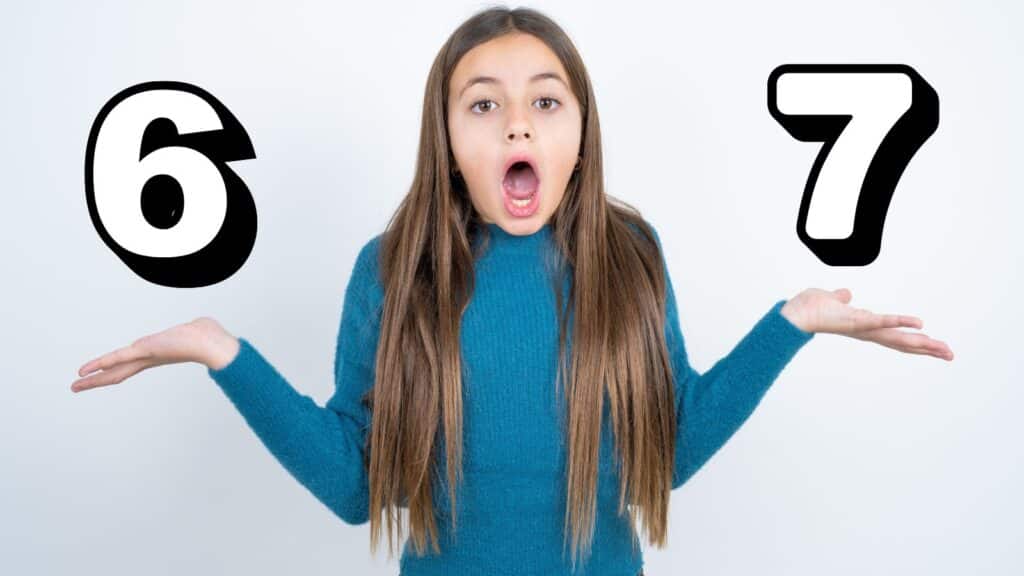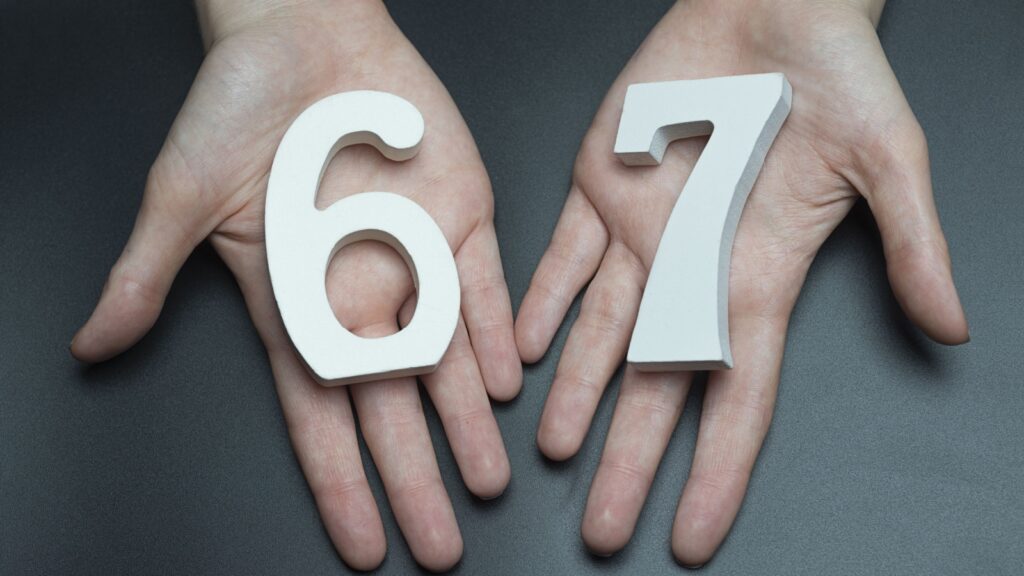Recently, people have been talking a lot about kids saying “6–7.” It’s more than a number. Some adults laugh along because they think kids are just having fun, while others are insistent on correcting kids. But the thing is, it’s not really a problem. The “6–7” meme is part of how kids play with language, and there are many reasons why they should be allowed to continue.
What “6–7” actually is (and isn’t)

Yes, “six–seven” is literally just two numbers said together. Kids usually say it with a hands-up gesture, as this is part of the meme. There’s no rude meaning attached to it. It’s not even a code for anything. It’s just a meme.
The meme came from a rap track called “Doot Doot (6 7)” by Skrilla. Short clips of the song went viral on TikTok before spreading even further through edits and remixes. It didn’t take long for the phrase to start appearing in schools, where kids made it their own. Simply put, it’s just another meme that’s made its way from music to real life.
What teachers and parents might notice
Unless they’re as TikTok-obsessed as younger people, most adults who hear “six–seven” for the first time are quite confused. But it has a pattern. The phrase usually happens in groups, with one young person saying it and others laughing. It then disappears as fast as it started.
The phrase rarely comes up when things are serious, as it’s simply filler during short breaks. For adults, the best thing to do is simply treat the meme like it’s part of normal conversation. Because it is. Correcting young people too harshly only gives the meme more power, and that keeps the trend alive longer.
It’s normal kid language play
Every kid has some nonsensical sayings they use. It’s always been that way. Hand-clap rhymes and phrases like “dibs” or “jinx” are examples of how creative young people can be with language. And “6–7” is another example of this kind of language play, just in a shorter form.
The phrase is fun for kids to say and easy to copy. It also gets a laugh, or two, from their friends, which is part of how language grows in childhood. Kids test sounds and timing, as well as delivery, long before they worry about what something actually means.
There’s nothing new about that. The only difference now is that language play is appearing in the digital age instead of the playground alone. Why would that be a problem?
Slang without fixed meaning is routine in adolescence
Additionally, slang helps people feel like they’re part of a group or community. That’s rather important when you’re a teenager or in middle school. Young people are figuring themselves out, and they need a sense of connection with their peers, or else they may feel completely isolated.
The 6-7 meme connects kids who’ve seen it, and it doesn’t have to make sense outside that circle. Every generation has these filler phrases that they use, like “wassup,” and “bet,” even “sheesh.” They almost always disappear once something newer catches on, but these phrases are necessary for social connection. For now, “6–7” is the newest form of that.
Sociolinguists have written for years about how shared language builds community. Kids mix online phrases and local accents, as well as inside jokes, into forms of language that belong only to them. Yes, adults might miss the humor or the timing. But that’s okay. The whole point is that the language is theirs, and “6–7” pops up as more a form of connection than rebellion.
Why it’s okay to let kids say it

There’s nothing inappropriate about “six–seven” because it’s not connected to any swear words or adult topics. It’s a harmless and silly trend. Those happen all the time. Kids use the phrase to bond with each other, rather than to insult or offend teachers.
Teachers or parents trying to stop young people should relax. The meme is simply a mixture of sound play and humor, like most memes, and it’s perfectly fine, as long as people aren’t using it to interrupt during class time. Kids using the meme during recess or between lessons aren’t harming anyone.
Schools have always had to make sure they allow kids to express themselves while also maintaining a sense of order. This meme doesn’t break that balance. It’s only out of place when kids get the timing wrong, rather than the words themselves. There’s no reason to treat it differently from other harmless fads.
How the phrase “six-seven” might fade
Every meme has its moment, and this one will too. Slang doesn’t last for very long once it hits peak popularity, and once enough people start repeating it, it loses its spark. Kids move on fast because they’re always looking for something new that feels truly theirs.
In a few months, you can guarantee that the same kids yelling “six-seven” will switch to another meme or expression. The internet moves too quickly for anything to stick for long. For now, it’s “6-7.” But in the future? Who knows?

